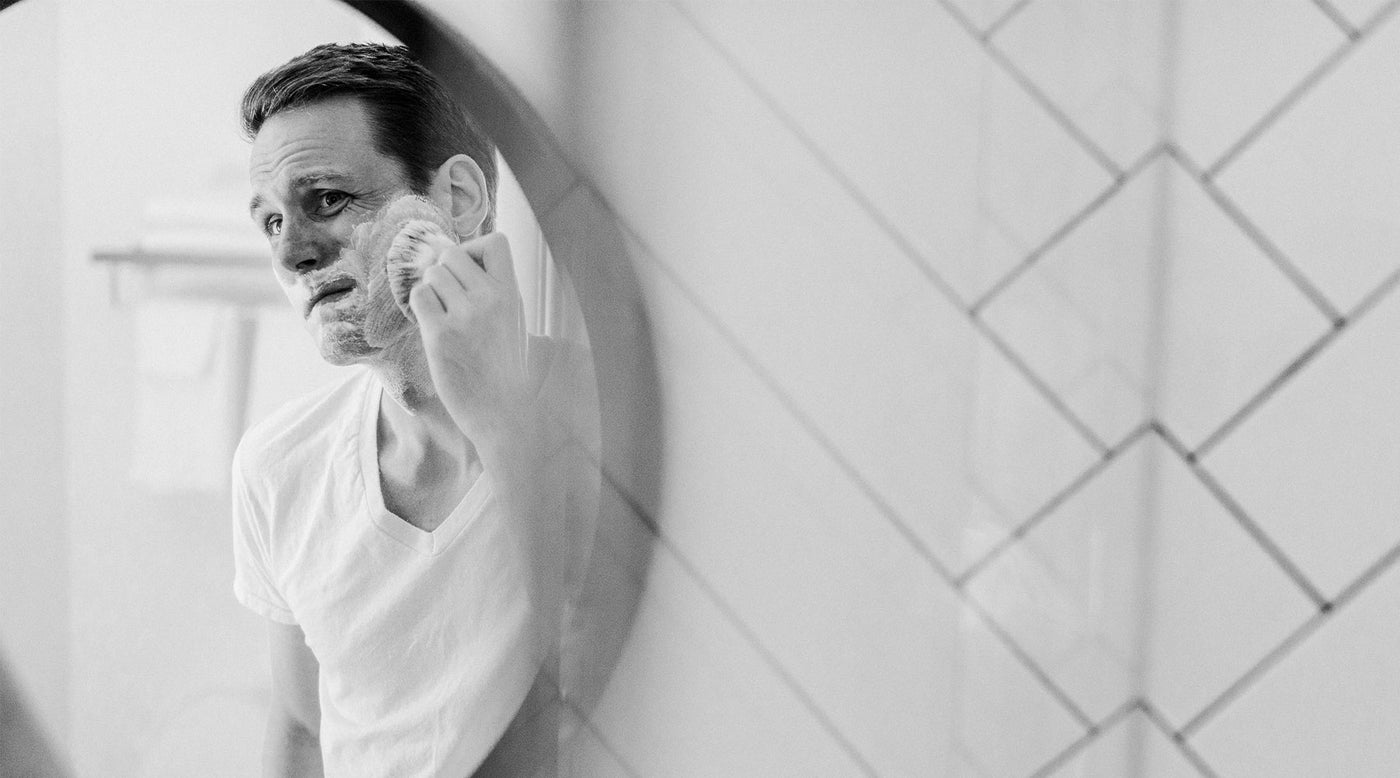
Many men find at least one aspect of their daily shave difficult, and while there's plenty advice out there for women on how to do their hair and makeup, there is not quite as much out there for men's grooming. It seems that men are expected to have shaving sorted - whatever stage they're at in their lives, but almost every man struggles with getting it just right.
Many of the guides that are available focus on how to shave but that doesn't really give the hints and tips you're looking for to master your shave or to get a good routine for beard care. After all, it's something you need to do every morning, and a poor shaving routine can lead to plenty of problems, from blemished, itchy and dry skin to ingrown hairs. By making sure you get everything right, you'll be amazed at how great your skin and face can feel.
One of the most important things to remember about men's shaving is that all men are different. Men get their facial hair at different times in their lives, and every man's beard growth is unique. How fast the hair grows, how coarse it is, the direction of growth and density all affect the equipment, preparatory products, aftercare and method for getting your best shave. This post focuses on one of the most essential components of a good shave: equipment.
Normally, men who wet shave use a razor with a cartridge. These are razors that have between three and five blades positioned at a fixed angle. The cartridges can be disposed of and replaced. When used properly these razors can provide a good, close shave, but used badly, a rough, uncomfortable shave and poor skin is often the result. The usual downfall that men have with these razors is not changing the cartridge frequently enough due to the cost of each unit. Generally, a cartridge will become dull after about five to 10 normal shaves. The blades deteriorate even after the first shave; this means that even though you are not using the razor, the blades are becoming duller. Using your razor when the blades are duller will result in less effective cutting and also some irritation. There are alternative to cartridge razors that you may wish to consider.
You might want to try a double edge (DE) or safety razor. This type of razor uses a traditional razor blade. These are more traditional razors and were generally used before cartridge razors became widely available. Nowadays, however, they appear to be making a comeback. These kinds of razors are more expensive for the initial investment, but the blades are much cheaper than their cartridge counterparts and save money over the long haul. They are also more environmentally friendly and provide a more satisfying shaving experience. Although these razors can take a bit of getting used to and are not as easy to use as cartridge razors, once you've mastered them, you may find that you get a better shave.
Your third option is a straight or cutthroat razor - the classic, old school razor you find in barber shops. Of all the razors, this is the most difficult to use. Using this razor requires real skill and a good technique, as well as research on the different brands and styles to find the right one. Done correctly, it can be one of the closest and smoothest shaves possible.
After you've chosen the best razor, it's important to look at what kind of soap, oil, cream or gel will get you the close shave you're looking for and how to use them properly. The reason products are used when shaving is to provide lubrication to assist the razor in gliding smoothly over the skin, and to moisturise and soften the skin and hair to make sure it can be easily cut. It is important that the product sits on the skin and not simply on the hair. You have two options for applying the product to your face: either by using your hands or by using a brush. If you choose to use your hands, you must ensure you're smoothing the product on to your skin past the hair growth - this will help in preventing irritation.
When it comes to using a shaving brush, there are many different varieties you can choose from. You can find brushes made with badger, boar or horsehair, but some synthetic brushes are also very effective. Badger brushes provide an excellent lather, but some men find them a bit too soft for more extensive growth. Many men prefer the firmer lather of a boar or horsehair brush.
This covers hardware, but you still need to consider preparation, grooming and aftercare products.
Wet shaving is an art form that a true gentleman should learn to master. It’s simply one of those skills that marks you out as a true man and even the ladies are impressed by the sight of a traditional shaving kit instead of the herd’s plastic and electric options.
There’s a knack to a wet shave, and you’ll definitely get better with practice. If you start with this simple men's wet shaving guide, you'll get there in no time and then you can hone your techniques and enjoy the benefits of a clean, smooth shave. Once you get it mastered, you'll be surprised at just how good it feels and won't want to go back.
Insert a new blade into your razor and soak your shaving brush. Do this at the start, with dry hands, or inevitably you will end up loading the razor with greasy fingers and one day soon you’ll slip and give yourself a nasty cut.
Soaking the brush helps build a better lather, too, as well as making it a bit gentler on your face, so give it a few minutes submerged in warm water to really get those bristles flexing and at their best.
Feel the grain of your facial hair and see how it changes in different areas of your face and neck. This will help you work out the direction of your strokes and it’s best to do it first and repeat the process until you know the map of your facial hair like the back of your hand. As with everything, you'll improve at this with practice, but it takes a bit of getting used to at first.
Once it’s covered in shaving foam, you might suddenly forget, go against the grain and cause yourself unnecessary irritation, or worse, a cut. Make sure you always remember to go with the grain.
Some people prefer a hot wet towel, while others rely on oils and potions. The simplest way to prep for your shave is a hot shower, but you’ll find the best way for you and you might prefer one of the many creams on the market scientifically designed to soften your hair and open your pores. Heat always works to open the pores, so a hot shower or rinse in advance is always a good idea.
Shake the brush to remove the excess moisture and load it with shaving soap by moving the brush in a circular motion over the shaving puck. Build the lather in a bowl or apply directly to your face. That's another personal choice, but for the full effect apply directly as it simply looks more professional.
Make sure you have the right angle to avoid a trip to casualty, or a nasty case of razor burn. Hold the razor perpendicular to your face, so no cutting blade is touching the skin, then slowly lower the razor and its angle at the same time. As soon as you can feel it start to cut the hair, that’s the angle you want to use.
You might be used to whipping the hair straight off with a multi-blade razor, but this is wet shaving and it works differently. It’s a multi-step process and the first step involves following the grain of the beard and using absolutely no pressure. This is crucial; if you try to do it all in one hit then you'll very quickly realise why that's not such a good idea, so take it slow and easy. You simply cannot use a traditional double-edged razor with the same speed you’d adopt for a multi-blade safety razor; it doesn’t work and will leave you bleeding and weeping. This is a precise job you're dealing with here, and you'll want to take care of your face - you only get one. After this step rinse your face and the blade.
Lather up again and now go for the second pass, this time working perpendicular to the grain. This part will take practice and you’ll almost certainly get it wrong. Don’t worry: keep working towards a perfect technique and eventually it will become second nature, just like anything else. Rinse your face and the blade once again, remembering to use hot water.
Feel your face and decide if the third pass is truly necessary. If you do it then your face will be baby smooth, but it also means there’s a high risk of razor burn; if you go for the third pass then make sure you have plenty of cooling creams or some Aloe-based treatment to follow up with. Also experiment and see how your skin reacts to the third pass - sometimes it will do more harm than good. Everybody's skin is different, and the more you do it, the more you'll get to know yours and what looks and feels best.
Rinse your face thoroughly with cold water to seal the pores once again and clean your gear. Also remember that the razor is potentially dangerous, put it back in its box or one day you will face the consequences.


Buying Christmas beard gifts for the man in your life can be tricky no matter if they are your brother, boyfriend or dad, even the bearded ones.
However, if the guy has a beard, you can be certain that some beard care items and or some form of facial hair item will be loved and cherished way beyond Christmas time.
